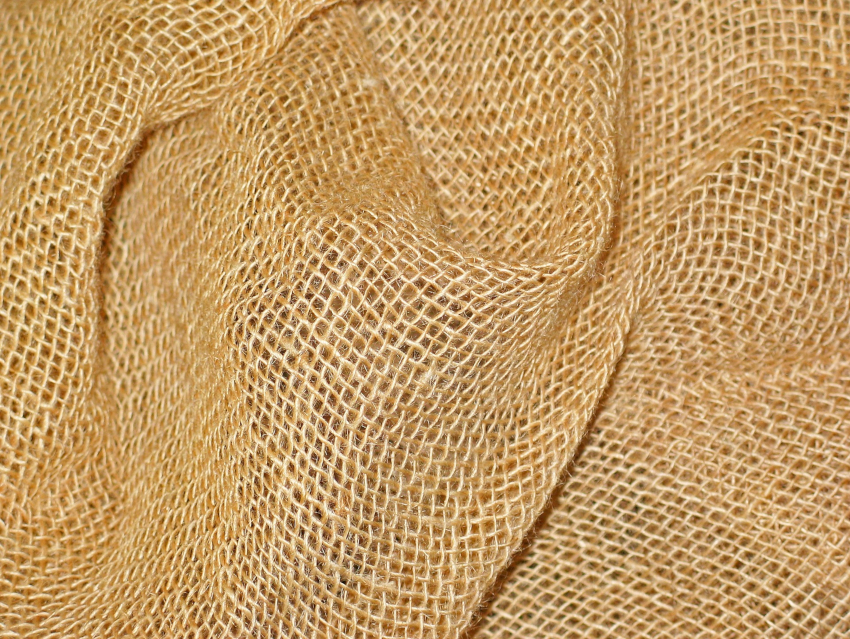Technology is an important driving force for economic growth at all levels. At present, numerous authorities around the globe are investing significantly in nanotechnology and considering it a powerful tool for the next industrial revolution.
Nanotechnology harnesses the potential of combining physics, chemistry, materials science, biotechnology, and engineering to create materials with a large number of exposed atoms on the surface. However, the success of nanotechnology partially depends on the sources of nanomaterials in terms of availability, renewability, functional groups, purity, and biodegradability. These demands create opportunities for jute as a model material source for nanotechnology.
Jute in Nanotechnology
Jute (Corchorus spp.) is one of the cost-effective natural fibers, second only to cotton in terms of production. The main chemical composition of jute fibers and sticks, which have a trace amount of ash content, are cellulose, hemicellulose, and lignin, making jute an ideal candidate for utilization in nanotechnology. It used to contribute robustly to countries’ economies; therefore, it was considered the “Golden Fiber”. Yet, the use of jute fibers has decreased because of the wide accessibility of long-lasting and fashionable synthetic fiber products in the market.
Consequently, scientists were attracted by the availability of vast amounts of unused, cheap, and environmentally-friendly jute fibers and sticks for use in nanotechnology. Jute has been employed for many aspects of nanotechnology and can be used for advanced applications. Our group recently published a review article providing comprehensive details about recent trends and possible future technological applications of jute [1].
Latest Developments and Future Aspects
Jute has been employed in a range of advanced nanotechnology applications and has shown promise for future breakthroughs. Some of the nanotechnology fields where jute can be used for advanced applications are shown in Figure 1. Importantly, both jute fibers and sticks are ideal candidates for preparing nanocellulose and carbon with nanopores or nanoparticle size. Thus, jute-derived carbon (with a fine porous structure and a large specific surface area) can be used in various areas, including energy storage, water treatment, and sensors [2].
 |
|
Figure 1. Present applications and future aspects of jute in nanotechnology. |
For example, jute-stick-derived nanostructured carbon electrodes (JCE) have applications in electrochemical energy storage and showed promising results compared with the commercially available activated carbon electrodes (ACE) [3]. The results showed that a JCE-based supercapacitor provides a specific capacitance that is five times higher than that of an ACE-based supercapacitor. The JCE-based supercapacitor has a specific energy density of 20 Wh/kg at a specific power density of 500 W/kg with good performance after 10,000 charge/discharge cycles.
We have also used jute stem as a support for the preparation of gold nanoparticles. The developed jute-stem-based dip catalyst was used for the hydrogenation of a series of nitroarenes in aqueous media [4]. Similarly, jute-stick-derived, highly porous carboxylated activated carbon nanosheets were successfully applied to remove Pb2+ (a toxic material) from aqueous solutions [5].
Conclusion
Using jute (cellulose-based biomass) in nanotechnology could have both economical and environmental advantages. Considering its technological, environmental, economic, and social contributions, it can be stated that jute could play a vital role in achieving sustainable developments via nanotechnology. Increasing productivity and benefits of jute through promising cost-saving technologies is a prime concern. Consequently, it could be very beneficial for farmers to focus on the cultivation of jute and contribute to technological developments.
References
[1] Syed Shaheen Shah, M. Nasiruzzaman Shaikh, Mohd Yusuf Khan, Md. Almujaddade Alfasane, Mohammad Mizanur Rahman, Md. Abdul Aziz, Present Status and Future Prospects of Jute in Nanotechnology: A Review, Chem. Rec. 2021. https://doi.org/10.1002/tcr.202100135
[2] Abdul Aziz, Syed Shaheen Shah, Abul Kashem, Preparation and Utilization of Jute-Derived Carbon: A Short Review, Chem. Rec. 2020, 20, 1074–1098. https://doi.org/10.1002/tcr.202000071
[3] Syed Shaheen Shah, Emre Cevik, Md. Abdul Aziz, Talal F. Qahtan, Ayhan Bozkurt, Zain H.Yamani, Jute Sticks Derived and Commercially Available Activated Carbons for Symmetric Supercapacitors with Bio‐electrolyte: A Comparative Study, Synth. Met. 2021, 277, 116765. https://doi.org/10.1016/j.synthmet.2021.116765
[4] Sodiq Adeyeye Nafiu, Syed Shaheen Shah, Abdul Aziz, M. Nasiruzzaman Shaikh, Biogenic Synthesis of Gold Nanoparticles on a Green Support as a Reusable Catalyst for the Hydrogenation of Nitroarene and Quinoline, Asian J. Chem. 2021. https://doi.org/10.1002/asia.202100385
[5] Md. Abdul Aziz, Imran Rahman Chowdhury, Mohammad Abu Jafar Mazumder, Shakhawat Chowdhury, Highly porous carboxylated activated carbon from jute stick for removal of Pb2+ from aqueous solution, Environ. Sci. Pollut. Res. 2019, 26, 22656–22669. https://doi.org/10.1007/s11356-019-05556-6



